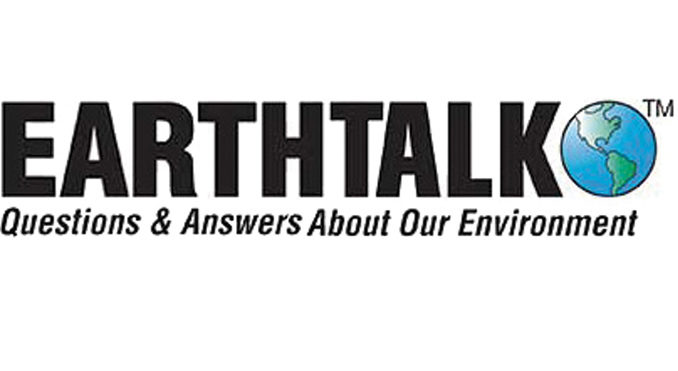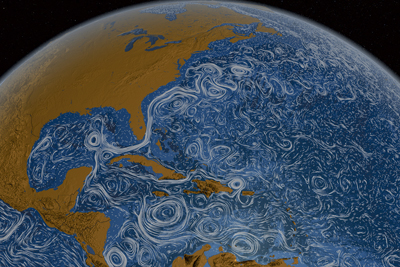
Dear EarthTalk: I’ve heard that grilling generates a lot of pollution and greenhouse gases. Are there greener types of grills or grilling methods that are more planet-friendly? ~ Bill D., Raleigh, NC
We certainly do love to grill. Whether it’s hot dogs, burgers, steaks, salmon or shish-kebab, chances are you and/or your neighbors have grilled it up recently. But all that grilling can’t be good for the planet or our carbon footprints. Researchers in the United Kingdom report that a typical summer barbecue for four people releases more greenhouse gases into the atmosphere than an 80-mile car journey.
There are several types of grills that can contribute to pollution, and your grill is most likely included. Charcoal grills release more emissions because they are literally burning carbon. If you live in a poorly ventilated area, charcoal grills may not be the best option since they release particulate matter into the air.
There are two major types of charcoal: lump charcoal, which is roasted wood; and briquettes, which are laced with chemicals and flammables. Both release very toxic volatile organic compounds and carbon monoxide when burned. But, between both of them, lump charcoal is the more sustainable option.
On the other hand, propane and natural gas grills emit significantly less pollutants than charcoal grills; however, they do burn fossil fuels. They are more efficient, cooking faster easier, but still release chemicals like Nitrogen oxide, although usually on a smaller scale compared to charcoal grills.

An even better option are electric grills. These might be pricier, but they do significantly reduce emissions and will last a long time without refueling. They rely on electricity from the grid, so their environmental impact depends on the source of electricity generation.
Choosing renewable energy sources, such as solar or wind power, further enhances the sustainability of electric grills. Similarly, infrared grills use infrared radiation for cooking. Instead of heating the air around the food, they target the actual metal and food on the grill. They also lock in moisture making them ideal for cooking steaks, burgers and other meats.
Grilling is an integral part of our culinary culture, but it is essential to acknowledge and address its potential environmental impact. By embracing sustainable alternatives, such as electric grills or infrared grills, we can still indulge in grilling while minimizing our carbon footprint.
CONTACTS: How much is your summer BBQ damaging the environment? manchester.ac.uk/discover/news/how-much-is-your-summer-bbq-damaging-the-environment/; Green Grilling for a Better Cookout, thespruceeats.com/green-grilling-basics-334977; How to Become a Green Grill Master, saveonenergy.com/green-energy/green-grilling/; The Greenest Way To Grill, theatlantic.com/science/archive/2021/07/grilling-emissions-environment/619394/.
_______________________________________________
Dear EarthTalk: Could the supposedly imminent collapse of the Gulf Stream cause another ice age? ~ B.L., San Francisco, CA
The Atlantic Meridional Overturning Circulation (AMOC)—aka the “Gulf Stream”—is a vital system of ocean currents, driven by temperature and salinity disparities at various locales and depths. Warm surface waters are propelled poleward by winds and tides. At the poles, the water cools, forming ice crystals devoid of salt and nutrients. The denser salt and nutrients sink to the cooler waters below, while warmer, less dense waters rise. This transports warmth and nutrients to the coasts of Africa and the Americas. In essence, the AMOC serves as a conveyor belt that transports nutrients and heat all around the globe.
Why are people worried about a Gulf Stream collapse? Rising global temperatures cause rapid melting of polar ice caps, introducing non-saline water. This dilutes deep currents, weakens AMOC’s upwelling, and disrupts circulation. Freshwater doesn’t sink rapidly, leading to a “traffic jam.” University College London researcher David Thornalley reports that the AMOC is at its weakest point in 1,600 years.

The future of AMOC is debated. Some predict it will halt; others foresee a slowdown. Some believe the point-of-no-return will come in 2025 while optimists believe we have until 2095 to stabilize the situation. Regardless, scientists have reached a consensus on the consequences of melting polar ice. The U.S. East Coast will certainly experience flooding and cooling. The Gulf Stream brings warm waters along the east coast of North America. If it stops completely, the East Coast may experience a 9°F cooldown within a decade. The National Oceanic and Atmospheric Administration (NOAA) estimates that water levels are rising at a rate of one inch every three years. Between now and 2050, coastal sea levels are projected to rise one to four feet. Areas like Miami, New Orleans, Atlantic City, Manhattan, Long Island, San Francisco, San Diego and Honolulu could face severe infrastructure damage from flooding. This is not a global-scale Ice Age, but it certainly implicates grave repercussions.
Areas in Africa and Asia will grapple with drought. The AMOC brings monsoonal rainfall to areas in West Africa and South Asia. Without this circulation, countries such as Sudan, Senegal, India and Thailand will encounter drought. The supply of freshwater for human activities and agriculture will be jeopardized. The Amazon Rainforest may transform into a savanna. The AMOC brings rainfall to the Amazon Rainforest. Without this precipitation, Harvard researchers hypothesize that this tropical forest may transition into a dry savanna. The Amazon would absorb less carbon dioxide and produce less oxygen. In addition, the over three million Amazon species will struggle to survive.
Biodiversity in aquatic ecosystems will decline. The AMOC transports nutrients and oxygen. Without the circulating presence of these organic materials, populations of life forms on all tiers of the food chain will most likely dwindle. Though neither the collapse of the Gulf Stream nor a modern-day Ice Age are guaranteed, the declining rate of the AMOC poses serious threats to our current way of life and the survival of other organisms around the globe. Reining in carbon emissions at home and around the globe is our only hope of avoiding this among many cataclysmic natural disasters in the years to come.
CONTACTS: Gulf Stream current could collapse in 2025, plunging Earth into climate chaos, https://www.livescience.com/planet-earth/climate-change/gulf-stream-current-could-collapse-in-2025-plunging-earth-into-climate-chaos-we-were-actually-bewildered; The Collapse Of The Gulf Stream — An Epitaph For A Dying Planet, https://cleantechnica.com/2023/07/27/the-collapse-of-the-gulf-stream-an-epitaph-for-a-dying-planet/.
EarthTalk® is produced by Roddy Scheer & Doug Moss for the 501(c)3 nonprofit EarthTalk. See more at https://emagazine.com. To donate, visit https://earthtalk.org. Send questions to: question@earthtalk.org.

